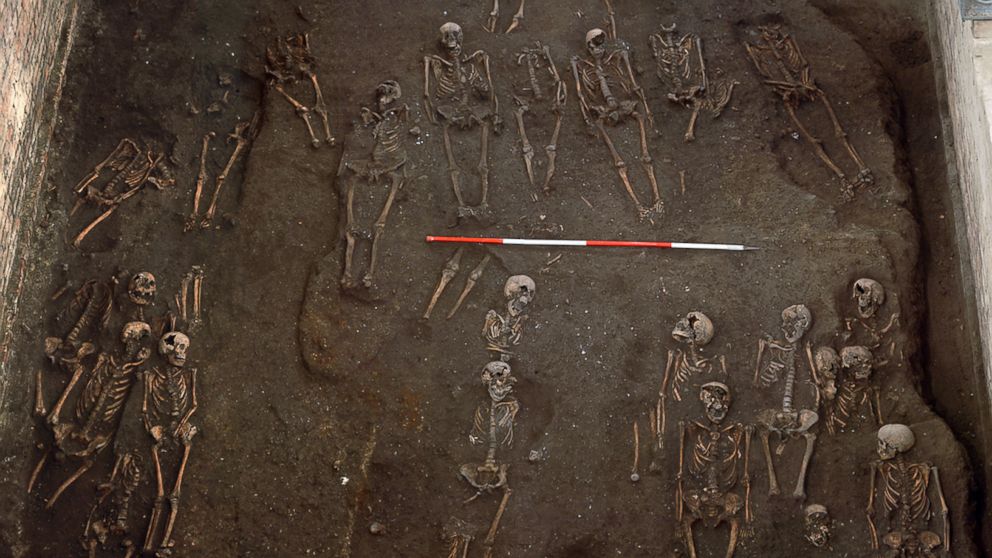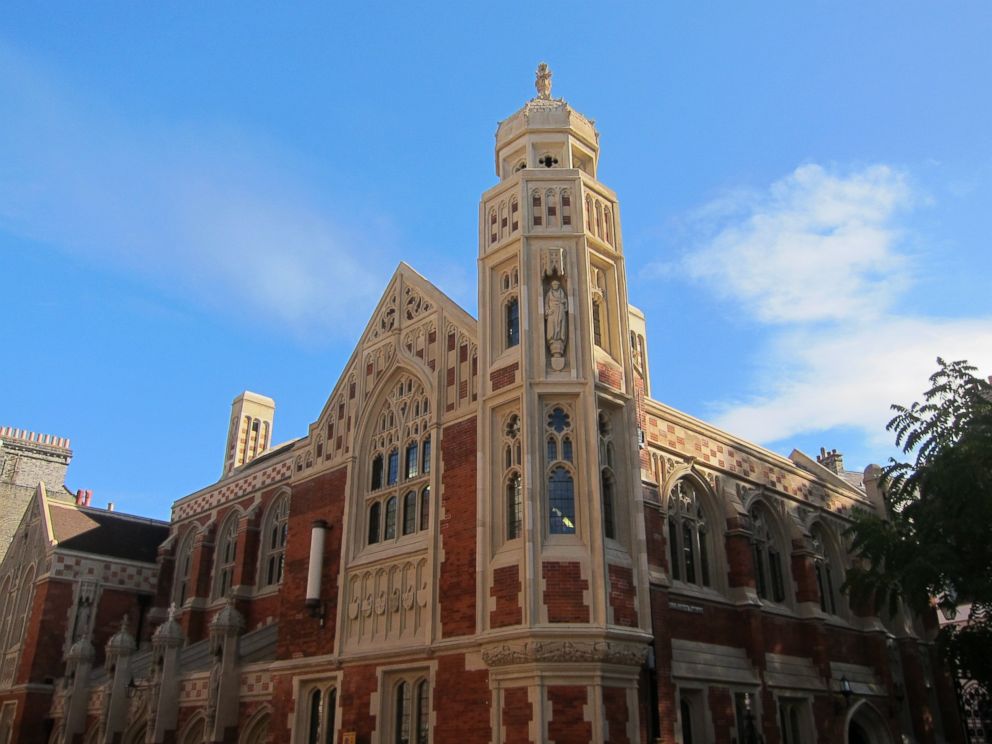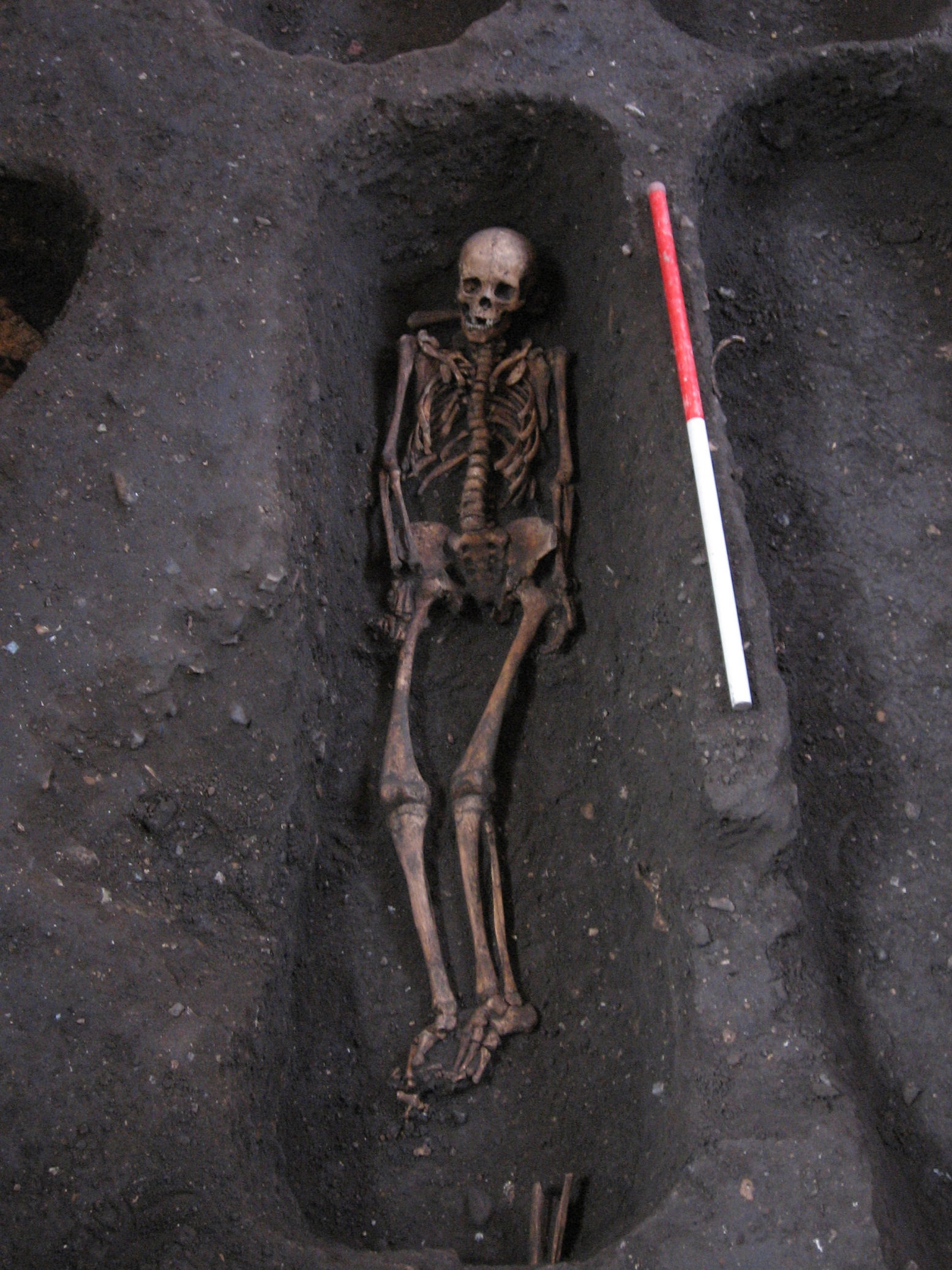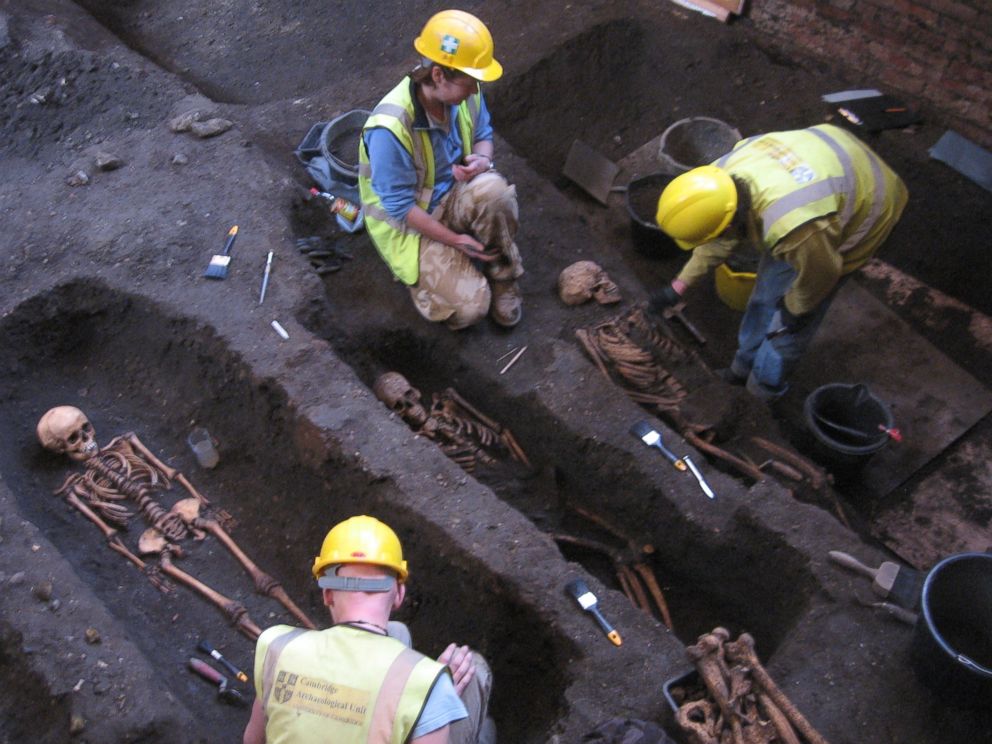Medieval Graveyard Found Under University of Cambridge
What archaeologists discovered during the excavation at Cambridge.

— -- More than 1,000 human remains dating back to medieval times were discovered at a burial site at the University of Cambridge along with at least 400 complete skeletons, according to research published today.
The medieval hospital was excavated several years ago was part of the Victorian era building's refurbishment. While researchers knew of the site, the scope of it wasn't discovered until an excavation from 2010 to 2012.
The results of the excavation and photos were released today in the Archaeological Journal.

Researchers said the skeletons date back to somewhere between the 13th and 15th centuries and were left opposite the site of the Hospital of St. John the Evangelist, which was established in 1195 to care for the poor and the sick.
Photos from the excavation site show hundreds of nearly complete skeletons perfectly lined up in burial rows, much like modern cemeteries. Researchers said the lack of coffins and scarcity of grave goods support the theory that the cemetery was used for the poor.

No evidence of the Black Death was found in the remains, according to researchers.
Craig Cessford of the Cambridge University Department of Archaeology and Anthropology led the dig and said it was "one of the largest medieval hospital osteoarchaeological assemblages from the British Isles."

The bodies did not appear to exhibit any serious medical issues that could have required care. This could mean "that the main role of the Hospital was spiritual and physical care of the poor and infirm rather than medical treatment of the sick and injured," the report said.




